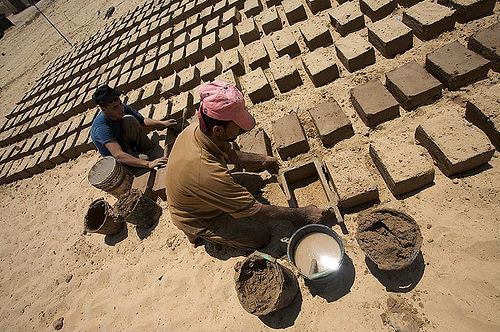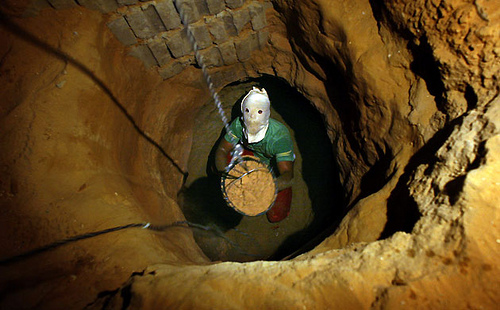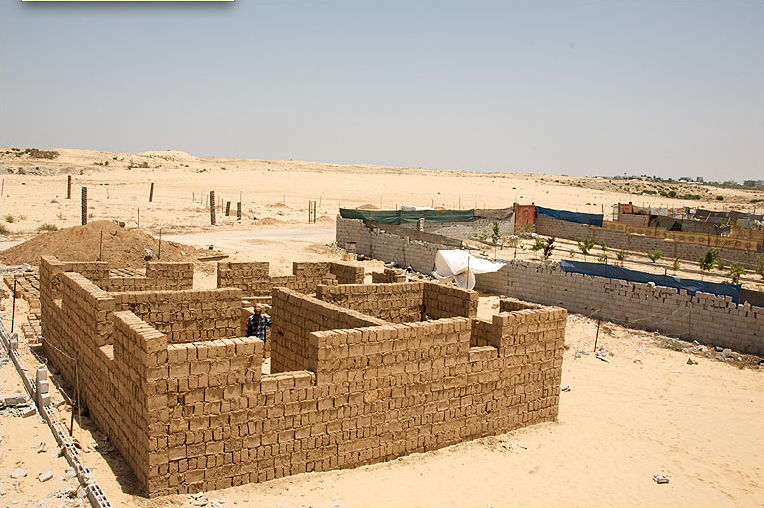John Novotny, a Melbourne resident, has developed a very simple and innovative method of rammed earth construction that results in houses massively cheaper than conventional ones and with amazing environmental benefits.He passionately wants to see this technique widely used to benefit ordinary people and contribute to a better world.
Earthquake Resistant Housing
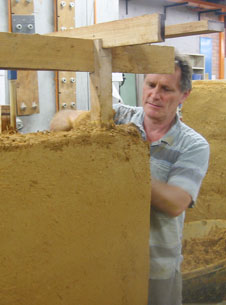
Specialist earth builder, President of the Earth Building Association of Australia, and guest researcher in the Faculty of Engineering and Information Technology, Peter Hickson, has combined one the world’s most ancient building techniques, “cob” construction, with modern engineering methods to develop a model house as part of an effort to createlow cost earthquake resistant housing for millions of people around the world. Hickson’s house introduces many new technologies, but what makes his system unique structurally is the addition of internalbamboo reinforcing and the use of structural diaphragms. Read more about Hickson’s research.
Earthquake Proofing Traditional Peruvian Houses
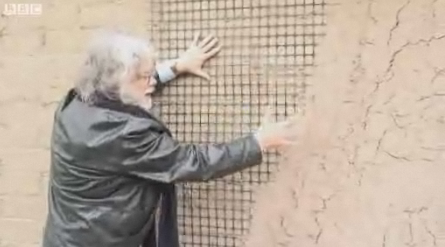
Since 1970, Peru has been hit by five powerful and deadly earthquakes. The latest struck Peru’s coast exactly two years ago with a magnitude of 8.0 on the Richter scale. It fiercely shook the capital Lima, but its devastating epicentre was about 200km (124 miles) to the south, near the town of Pisco, a small fishing port built largely of adobe – mud bricks which Peruvians have used for thousands of years. For Peruvian engineer Marcial Blondet, it was the devastating quake in 1970 that first motivated him to develop earthquake-resistant buildings, particularly for those who could least afford them. Mr Blondet and his team found a solution in an industrial plastic mesh used by mining companies to hold back earth on slopes. It is strong, cheap and easy to use. Securely enveloping a normal mud-brick home in the mesh can prevent the walls from collapsing in an earthquake. The building wobbles but it does not fall down.
Modern Rammed Chalk
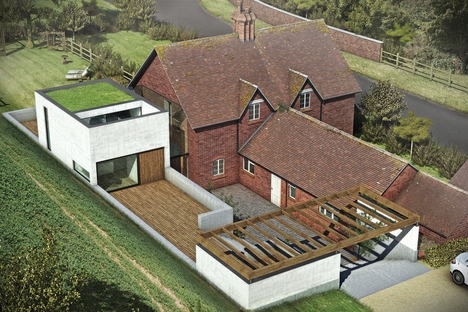
Credit: The White balance
Dan Brill Architects has designed a £50,000 extension to an Edwardian home on the outskirts of Winchester using rammed chalk. The chalk, which makes up the soil of the site was considered as it is a traditional technique in the region and because of the large amount of excavation required to accommodate the addition.
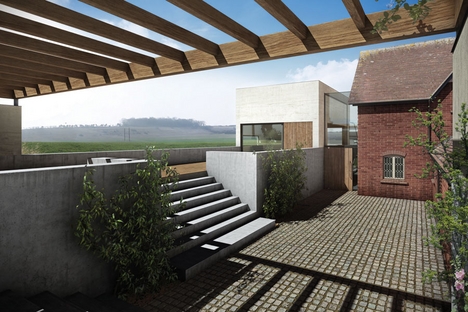
Credit: The White balance
The clients, who wanted something contemporary and innovative, appreciated rammed earth and more so the pristine appearance of the stark, white chalk walls. The material has been used in modern construction in the Pines Calyx project. It was also used in the construction of eight experimental cottages at the Department of Industrial Science and Research at Amesbury between 1919 and 1921. Construction is slated for later this year.
Oaxaca School of Plastic Arts by Mauricio Rocha
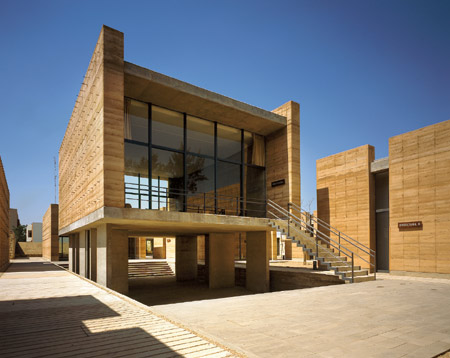
The Oaxaca School of Plastic Arts was designed by Taller de Arquitectura—Mauricio Rocha at the request of artist Francisco Toledo, in collaboration with the Benito Juárez University. An important premise incorporated into the project was the presence on the plot of land of a Mixtec ball game, used on weekends by players.
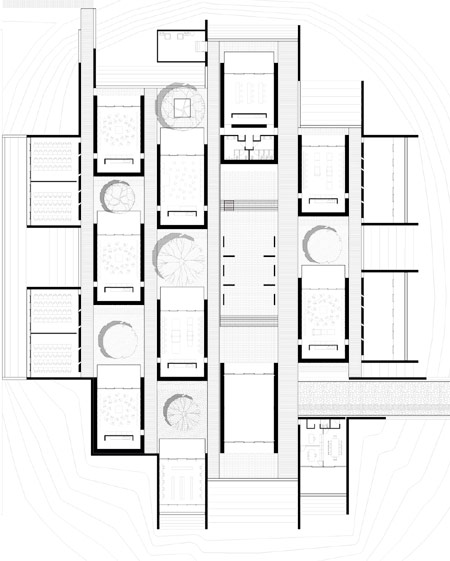
Several campus construction project occurring at the same time made available a tremendous amount of earth, inspiring Rocha to construct several of the buildings within complex out of rammed earth. This enhanced the quality of the exterior courtyards and created a comfortable micro-climate within the building optimal for Oaxaca. Other buildings are made of stone and create a series of inhabitable terraces.
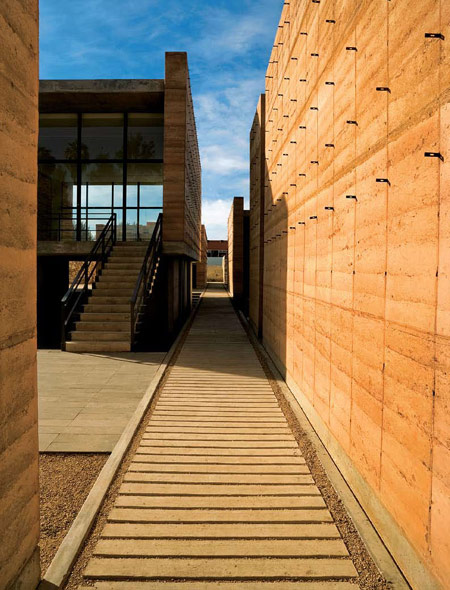
Exterior courtyards suggest a floor layout in the shape of a chessboard, where the alternation between mass and space in the walkways creates a variety of views and paths.
Read more about The Oaxaca School of Plastic Arts.
Last Chance to See Kashgar
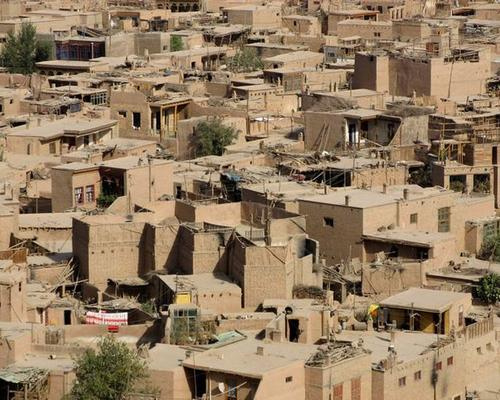
Bulldozers are to raze the mesmerising mud brick old town in the Chinese Silk Road city of Kashgar. Visit soon before its vibrant street culture is lost, or better, help save Kashgar.
Gaza Mud Brick Houses as Inverted Tunnels
Previously we reported that the Israeli siege on Gaza led to citizens constructing their houses with mud brick due to a lock on billions of dollars in reconstruction funds pledged by the international community. The ingenuity also stems from a resource created by the excavation of border tunnels, primarily in the Rafah region, used to transport goods from Egypt. When tunnels are dug, mounds of mud are created, and this mud is considered prime for the production of mud bricks. Under the siege, and due to Gazans’ loss of hope that reconstruction projects will rebuild the thousands of houses and institutions destroyed by the Israeli occupation, particularly during its New Year offensive, many homeowners have begun to explore the mud alternative.

Photo credit (left), Photo credit (right)
“Hamas is actually supporting the mud-brick housing movement and has pledged money and assembled a special engineering committee to investigate a pilot project that will test a multistory school to determine just how safe and plausible building more widespread with mud brick can be. Of course, all of this has spawned a new temporary economy in tunnel mud removal and brick manufacturing, and the engineering itself is quite antiquated but none the more outdated. They’re using combinations of mud, sand, salt, and straw, and in some cases rubble to forge bricks and build basic homes. Some have already been said to have withstood elements of winter rains and harsh summer sun….It’s almost as if the tunnels had been turned inside out, sort of poetically unraveled overland as a result of the Israeli assaults, and now offer the dual benefit of both relief housing while also keeping the essential corridors of underground commerce alive. In some ways it’s just good old-fashioned poetic justice bound with some gritty irony. “ writes Subtopia.
Several videos about the mud brick houses are available on YouTube. In one, the daughter of Nidal Eid, a 35 year-old who constructed his own mud brick house, states, “Daddy makes everything out of mud, but he can’t make me mud toys.” In another video it is suggested that building with mud brick is “a step back in time.” But is it a step back, or a step forward, creating a Palestinian identity through architecture drawn from tunnels that “represent the frontier of Gaza’s fight for geo-economic autonomy…amazing blueprints as uprooted spaces edited into fresh new infrastructure now in plain view”, as mentioned in the Subtopia essay. “Mud is valuable”, mentions a builder of a mud brick house in another video.
[Gaza’s Mud Brick Homes | Gaza’s Gritty Mixture of Dirt, Despair Produces Houses of Mud | Mud, mud, glorious mud. Nothing quite like it for beating the Israeli blockade | Subtopia: Over the Siege ]
Syrian Beehive Houses
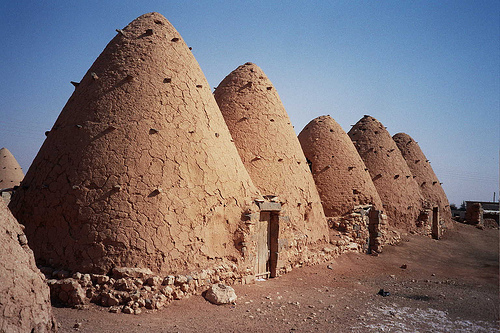
Designed for the desert climate, the beehive homes keep the heat out in a few ways. Their thick mud brick walls trap in the cool and keep the sun out as well (beehive homes have very few, if any, windows). The high domes of the beehive houses also collect the hot air, moving it away from the residents sleeping at the bottom of the house.
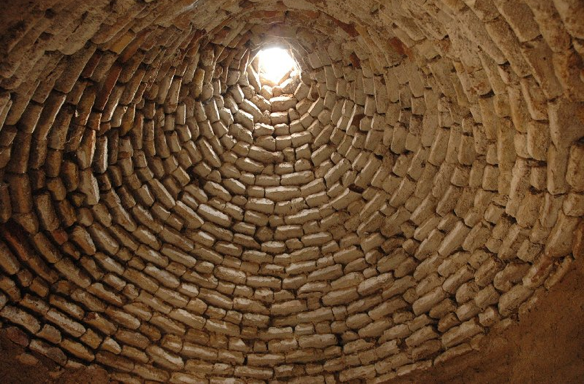
Inside, its high dome serves to collect the hotter air, and outside to shed rainfall instantly, before the brick can absorb it and crumble. Its thick roof-cum-wall is an excellent low-velocity heat-exchanger, and keeps interior temperatures between 85° and 75° F. while outside noon-to-midnight extremes range from 140° to 60°.
Casa Entre Muros: A House Between Walls
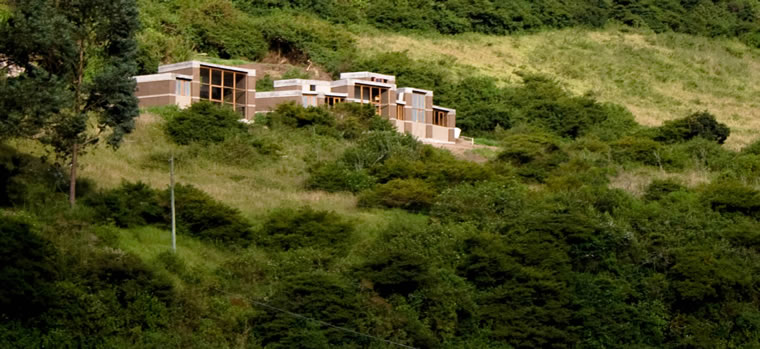
The Casa Entre Muros, built in Tumbaco, Quito, Ecuador and designed by al bordE Arquitectos (David Barragán and Pascual Gangotena), was generated from the starting point: “There is always another way of doing things and another way for living”. Far from the pollution of the city, the house is set in the hillside of the Ilaló volcano in a indomitable land. It’s limited by two streams opened to the landscape of the valley. A cut in the sloping land helps to generate a platform for the project and also to get enough raw material to build the massive party walls.
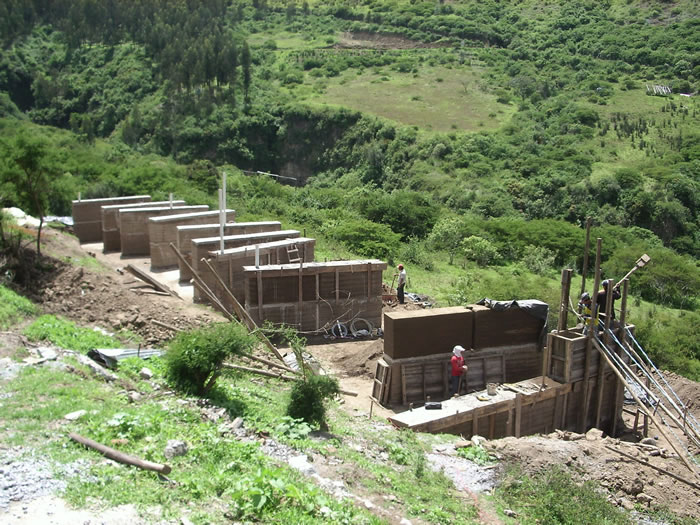
The waving form as a result of this cut in the land, defines the position and order of every wall. The succession of rammed earth walls and the different heights of the roof caused the division of the house even for the activity or the user. To avoid the domino effect, the party walls break their parallelism solving the structure and strengthening the character of each space within. A long corridor is used as an element that isolates the project from their immediate neighbours and reinforces the autonomy of every space.

This architecture aims to highlight the nature of the material elements that compose it, promoting the aesthetic, formal, functional and structural qualities as well as the maximum respect of the environment.
A Housing Market Built on Mud Takes Off, and Then Goes Thud
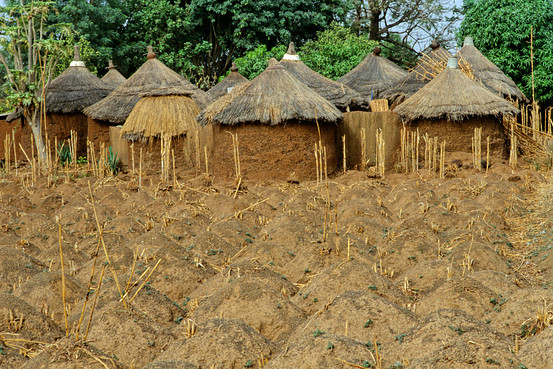
The West African village of Nionsomoridou , Guiea doesn’t have running water or electric lights. Most people get here by walking barefoot along a dirt path. The remote mountain community has one up-to-the-minute feature, though: a housing bust. Rents had risen in recent years, and local residents and home builders let their enthusiasm get the better of them, turning out a spate of new construction. Now, rows of newly built houses stand empty in the village, and rents have been cut in half. So far, not so different from Miami or Phoenix. Except that these homes are one-room, windowless mud-brick huts, and the rent is about $6.50 a month.
For centuries, Nionsomoridou faced no risk of a housing-market crash, because it didn’t have a housing market. There were no unused houses. If a son married and needed room for children, his relatives put up a new hut next door, on village land that is communally owned. Then came the global commodities boom, with far-reaching effects on Nionsomoridou, situated deep amid lushly forested mountains rich in gold, diamonds and one of the world’s largest virgin iron-ore seams.

